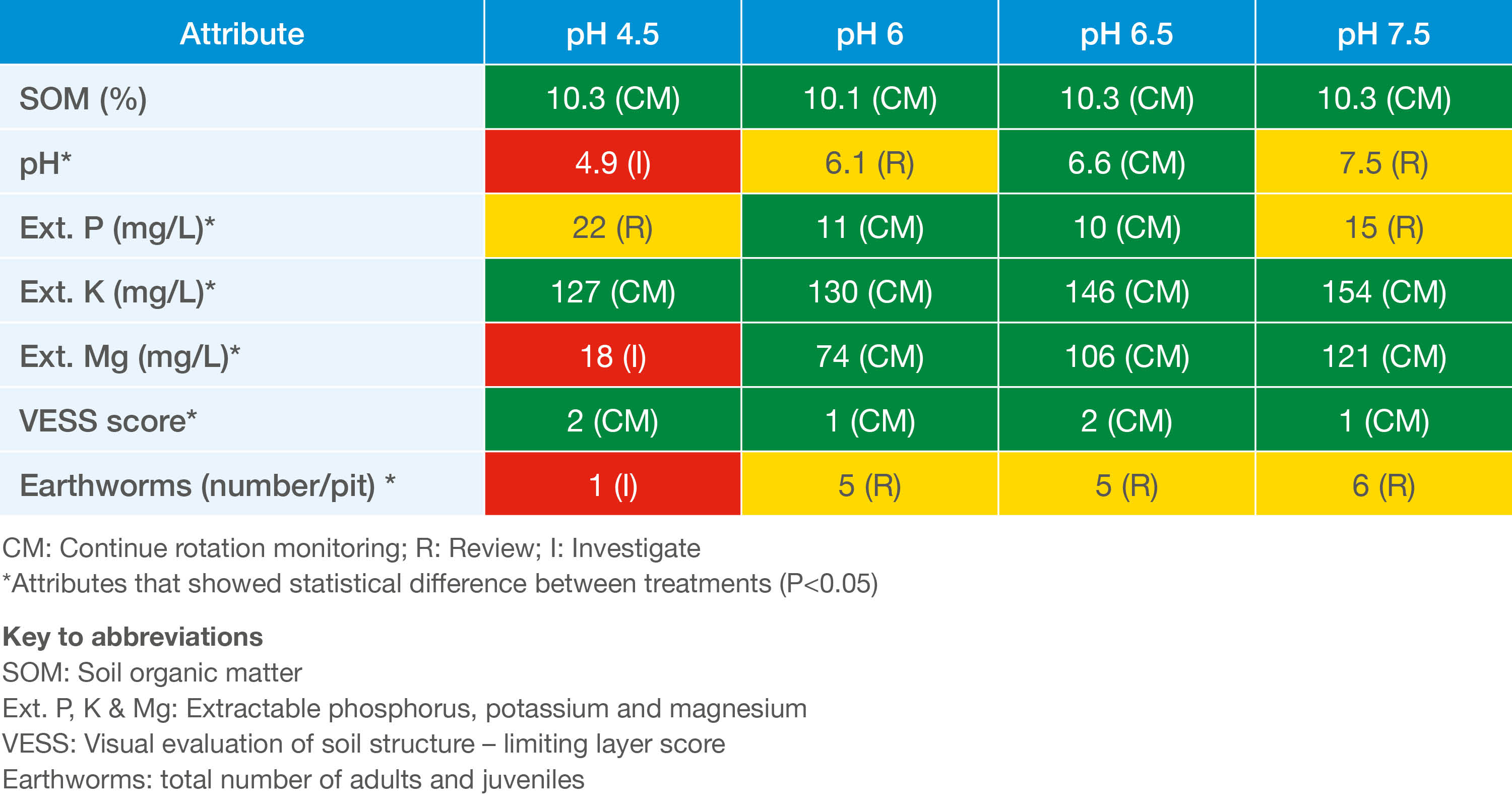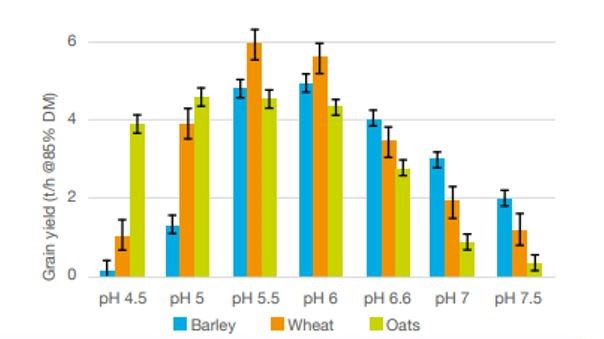- Home
- Knowledge library
- Testing the effect of pH on soil health
Testing the effect of pH on soil health
The pH of a soil affects the chemical environment in which soil organisms live. The soil health scorecard has been tested at a long-term experimental site to explore this key driver of soil biology.
Assessing soil health using a scorecard approach
Soil health scorecard
The scorecard brings together information about soil chemical, physical and biological properties. It uses traffic light coding to identify those properties that require further investigation. This then helps inform the management steps needed to minimise potential risks to crop productivity and the environment.
Soil pH is a key component of soil health because it affects soil chemical (e.g. availability of nutrients), biological (e.g. microbial activity) and physical properties (e.g. aggregation of clay minerals).
Long-term experiment at SRUC Craibstone
The long-term pH trial in Woodlands Field at SRUC Craibstone near Aberdeen was set up in 1961. It is sponsored by the Scottish Government RESAS programme. The effects of pH levels ranging between 4.5 and 7.5 (in 0.5 increments) on soil properties and crop performance are being tested. Crop yields reflect the differences in pH, with highest yields attained between pH 5.5 and 6.0 for all crops tested.
The trial involves an eight-course rotation comprising three-year grass/clover ley, winter wheat, potatoes, spring barley, swede and spring oats (undersown with grass/clover). Each crop in the rotation is present every year, enabling a comparison of the response of all crop types within the same season.
Aerial image of the Woodlands long-term experiment at Craibstone
 SRUC
SRUC
Crop rotation: Three-year grass/clover ley (Grass Year 1-3), winter wheat, potatoes, spring barley, swede, spring oats undersown (u/s) with grass-clover
Testing the soil health scorecard at SRUC Craibstone
Measurements of topsoil chemical, physical and biological properties were taken from four crops (second-year ley, following winter wheat, potatoes and spring oats) at four pH levels (4.5, 6.0, 6.5 and 7.5).
Example soil health scorecard for Craibstone: effect of soil pH (averaged across the four different crop types)

The results show a clear effect of low soil pH on several soil properties – particularly nutrient availability and number of earthworms.
There were also differences between crop types: earthworm numbers were significantly lower in the potato crop, and organic matter levels were lowest in the oats grown before the three-year grass ley.
pH affects crop yields
Cereal crop yields also reflect the differences in pH, with highest yields attained between pH 5.5 and 6.0.
Cereal grain yield (48-year average)

Further information
The above video shows how the soil health scorecard was tested at long-term experimental sites
.jpg)
Topics:
Sectors:
Tags:

